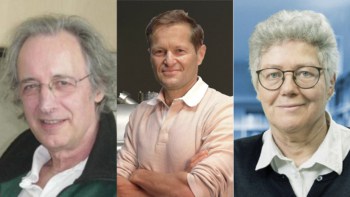Ahmed Zewail, a chemical physicist from the California Institute of Technology, has won the 1999 Nobel Prize for Chemistry for the development of laser-based techniques that led to a completely new scientific field called femtochemistry. Zewail pioneered the use of ultrafast lasers to probe the movement of atoms during chemical reactions on femtosecond time scales. The official citation says that the prize has been awarded to Zewail "for his studies of the transition states of chemical reactions using femtosecond spectroscopy."
Prior to Zewail’s work chemists had thought that chemical reactions occurred on the same time scale as molecular vibrations — that is, on the femtosecond scale. In the late 1980s, Zewail developed a technique that could follow the motion of atoms and molecules on these time scales. A strong laser pulse was used to start a chemical reaction, and a second, weaker, laser was used to probe the reaction. By varying the time interval between the two laser pulses it was possible to monitor different stages of the reaction. This technique is now widely used throughout chemistry.
Ahmed Zewail was born in Egypt and received his first degree from the University of Alexandria. He received his PhD from the University of Pennsylvania in 1974, and has been at Caltech since 1976. Zewail, who currently holds the Linus Pauling Chair of Chemical Physics, won the Wolf Prize for chemistry in 1993.



